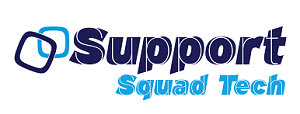Occupational therapy is a vital part of patient care, but in the past few years, it’s become clear that technology can play a key role in improving the outcomes of patients and their treatment plans. Here are five ways you can use occupational therapy software to boost patient care.
Telehealth
Telehealth is a cost-effective, convenient way to improve patient care and it can be implemented into your practice. This technology allows you to remotely monitor your patient’s progress and provide them with additional treatments when necessary. It’s also beneficial for patients who live in remote areas, and who may not be able to visit their local physical therapy clinic regularly.
Telehealth uses video conferencing technology so that patients can interact with their occupational therapist from the comfort of their own homes or workplace, ensuring that they receive quality treatment at all times. This means that you don’t have to worry about finding space for extra appointments—it’s as easy as setting up your webcam and watching over your patient from afar. If you’re worried about privacy concerns (or being seen in public), telehealth has an option for that too: text messaging software allows you to communicate with clients without having anyone else involved in the conversation besides yourself and whoever else needs access.
Automated documentation
While documentation is a key part of patient care, it takes up a substantial amount of time that could otherwise be spent on other things. As such, many occupational therapists are looking for ways to automate their documentation and make the process more efficient so that they can focus on what matters: providing quality patient care.
Automated documentation is an extremely powerful tool for improving efficiency and accuracy. By using an electronic health record (EHR) system, OTs can integrate seamlessly with other software tools to create an excellent record-keeping ecosystem. For example, if your practice uses electronic scheduling software, automatic scheduling using triggers will allow patients to receive reminders about upcoming appointments as well as reminders about insurance coverage requirements or any new medications prescribed during each visit.
The best part of using occupational therapy software is that everything works together through one central hub where all relevant information lives together—and it’s all stored securely in the cloud so there’s no need to worry about losing any data due to outdated hardware failing unexpectedly.
Outcome measurement
Outcome measurement is a key part of evidence-based occupational therapy practice. It’s an important part of the process of improving the quality of patient care, and it can help to identify areas for improvement or best practices.
Occupational therapists are often required to measure outcomes in their patients as a means of determining whether they’re meeting that patient’s goals and objectives. For example, they may ask their patients if they’ve experienced any pain since their last session; this helps them see whether or not what they’re doing is having an impact on the patient’s condition.
Outcome measurement data should be recorded consistently so that it can be compared over time or across different locations. This allows therapists to better understand how effective their techniques are at treating certain conditions—and if adjustments need to be made for future sessions with patients under similar circumstances
Integrated EHR and practice management software
In addition to occupational therapy technology, integrated EHR and practice management software can help you track patient progress and outcomes. This is especially useful for patients who suffer from chronic conditions like back pain or arthritis because it allows you to easily see how their condition is progressing over time.
Integrated EHR and practice management software can also be used for scheduling treatment sessions, which can allow you to provide more efficient care without sacrificing the quality of service.
Conclusion
The use of technology to improve patient care is becoming more and more common. As the U.S. population continues to age and healthcare costs rise, providers need to find new ways to keep up with demand without sacrificing the quality of care or patient satisfaction. Because of this, occupational therapy software can help ocupational therapists provide better service by improving their workflow and streamlining their practices so they can focus on what matters most: their patients’ health needs.


